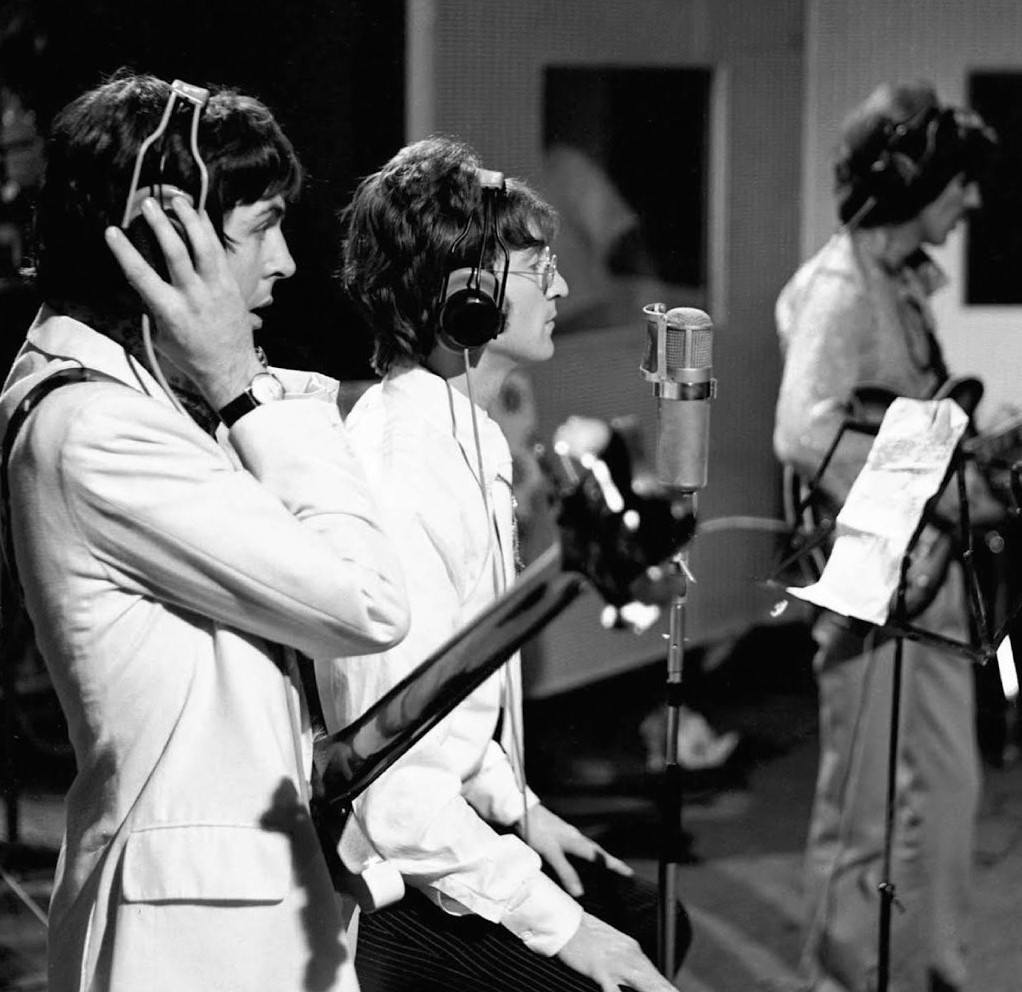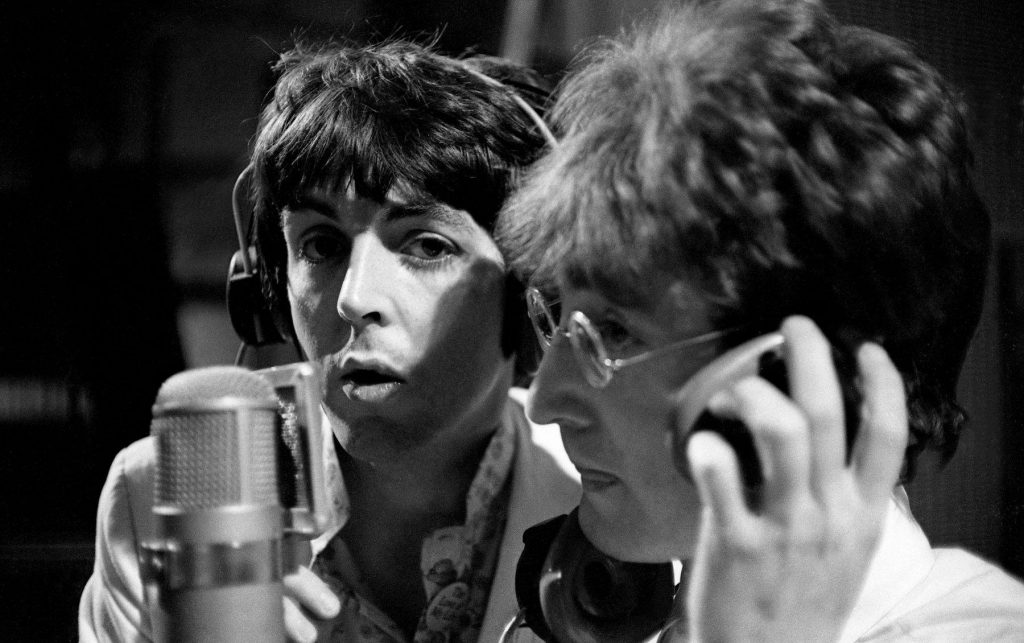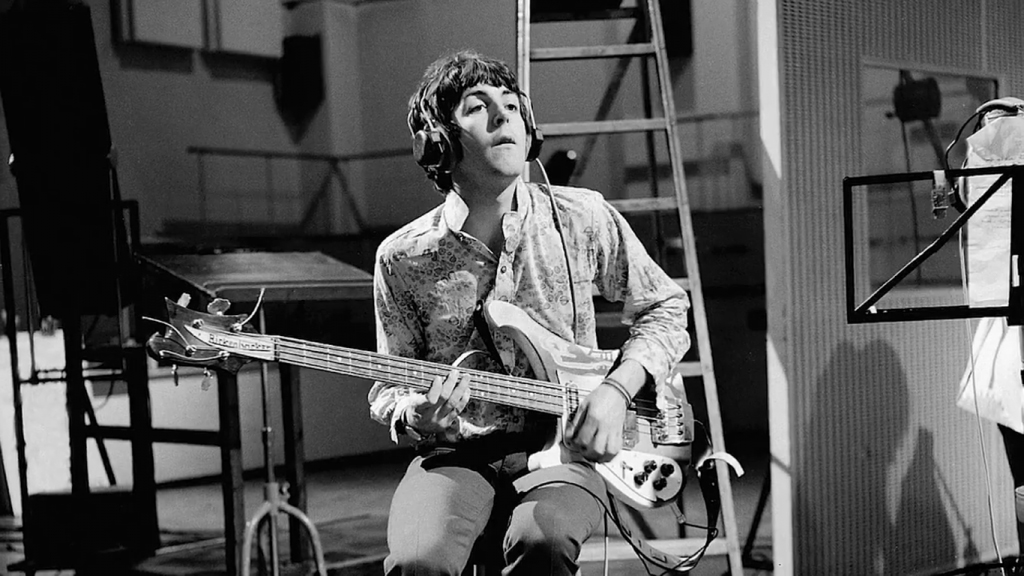Saturday, June 24, 1967
Recording "All You Need Is Love" #4
For The Beatles
Last updated on April 5, 2023
Saturday, June 24, 1967
For The Beatles
Last updated on April 5, 2023
Recording studio: EMI Studios, Studio One, Abbey Road
Session Jun 21, 1967 • Mixing "All You Need Is Love"
Session Jun 23, 1967 • Recording "All You Need Is Love" #3
Session Jun 24, 1967 • Recording "All You Need Is Love" #4
Interview Jun 24, 1967 • Press conference for The Beatles' "Our World" performance
Session Jun 25, 1967 • Our World TV Broadcast: The Beatles' performance of "All You Need Is Love"
May 18, 1967 • The Beatles will participate in "Our World"
Jun 14, 1967 • Recording "All You Need Is Love" #1
June 17-22, 1967 • Mike Vickers writes the orchestra arrangement for "All You Need Is Love"
Jun 19, 1967 • Recording "All You Need Is Love" #2
Jun 21, 1967 • Mixing "All You Need Is Love"
Jun 23, 1967 • Recording "All You Need Is Love" #3
Jun 24, 1967 • Recording "All You Need Is Love" #4
Jun 24, 1967 • Press conference for The Beatles' "Our World" performance
Jun 25, 1967 • Our World TV Broadcast: The Beatles' performance of "All You Need Is Love"
Jun 25, 1967 • Shooting of "All You Need Is Love" promo film
Some of the songs worked on during this session were first released on the "All You Need Is Love / Baby You're A Rich Man (UK)" 7" Single.
On May 18, 1967, Brian Epstein signed a contract for The Beatles to appear as Britain’s representatives on “Our World”, a live television production that would be broadcast internationally via satellite on June 25. For this momentous occasion, The Beatles chose to record “All You Need Is Love”, a track written by John Lennon, and perform parts of it live.
The Beatles began recording “All You Need Is Love” on June 14, 1967, at Olympic Sound Studios, and continued working on it at EMI Studios, Abbey Road, on June 19. A mono mix was prepared on June 21, which was used as a reference for the orchestra’s scoring by George Martin.
On June 17, Mike Vickers, a member of Manfred Mann, was asked to write the orchestra arrangement, as George Martin had some personal constraints. Mike Vickers was also asked to conduct the orchestra during the rehearsals and live recordings, as George Martin would be busy producing the session on the day of the broadcast. He completed the writing of the score on June 22.
On June 23, the 13-piece orchestra, composed of four violins, two cellos, two tenor saxophones, two trombones, two trumpets, an accordion, and a flügelhorn, held their first rehearsals at Abbey Road Studio 1.
On this day, June 24, they returned for a second day of rehearsals in preparation for the worldwide satellite broadcast on June 25.
Before the session started, a press conference was held at Abbey Road in the late morning, with numerous reporters and photographers invited in through the normally closed doors.
From 2 to 4 pm, the BBC camera crew, directed by Derek Burrell-Davis, the producer of “Our World“, was present to decide on camera angles and the positioning of The Beatles and the orchestra during the broadcast.
The afternoon before the broadcast, the BBC crew rolled up and started camera rehearsals. […] We soon got word that the television director wanted to place a camera in the control room to get shots of the three of us. An obviously pleased George Martin turned to Richard and me and said, “You two had better smarten yourselves up—you’re about to become international TV stars”… which had the effect of making me even more nervous!
Geoff Emerick – From “Here, There and Everywhere: My Life Recording the Music of The Beatles“, 2006
The rehearsals took place from 5 to 8 pm, with four more takes recorded, numbered 44 to 47, during a simultaneous reduction mix, with John Lennon on vocals, Paul McCartney on bass and backing vocals, George Harrison on guitar and backing vocals, Ringo Starr on drums and the orchestra.
The orchestra arrangement written by Mike Vickers was improved during this session.
George M and Paul wandered over to the saxophone players, and started talking to them. What was going on? Was I out of the loop, now? I stood back, behind one of the cameras, and then I heard the sounds of a somewhat corny, almost slapstick phrase from the saxophones, which Paul seemed to be singing to them. Then he seemed to be suggesting a sort of smeary swoop up to the first note of the phrase. BA-ba-baba-baa, went the tenors, sounding for all the world like they were playing on a Norman Wisdom film score. BA-ba-baba-baa. I couldn’t see how it was going to work.
And then, from my disadvantage point behind the camera, I saw George requesting the playback again, and there were four bars lead in, then ‘All you need is Love’, and then BA-BA-BABA-BAA went the saxophones, and then again, ‘All you need is love’ – BA-BA-BABA-BAA! Wow, it sounded great, and so exactly perfect in those little gaps in the chorus, bringing a whole new element of joyousness to the song, with an unexpected blast from a more vaudevillian past.
And then John came out and talked to George, suggesting a change in the orchestration of the opening anthem, so the trombones were lower, creating a more brassy sound, and that was tried with the track, and that sounded excellent too, although it had been pretty good before.
This was the Beatles at work, in their element – having heard something, they could now shift it around, change it, do whatever they wanted with it. The studio was their playground, after all.
Mike Vickers – From “A Week in the Life: working with the Beatles on ‘All You Need Is Love’“, 2019
Now they were concentrating on the end section, destined for a long fade, where everybody keeps playing, but gradually the faders are pulled down, and the song seems to float off into infinity. A popular ruse at the time, but it seemed like this fade was going to be a very long one, because now Paul and John seemed to be both making suggestions to George, who was conveying them to the musicians verbally. And then I heard the tune ‘Greensleeves’, the Olde English evergreen, and the musicians were making notes on their parts, and then the end section was played back, and the violins bowed the lovely old melody in it’s original 3/4 time over the 4/4 of the end section, and it sounded floaty, unreal.
And then they turned their attention to the trumpet players, and George must have known they’d be familiar with the piece of music he possibly suggested, although it may have been Paul, who obviously listened to many things. The trumpet players played the first bit of the Two-Part Invention on their little high piccolo trumpets – otherwise known as Bach trumpets, because Johann Sebastian liked using them – and this added quite a Germanic tinge to the whole thing.
And then, amazingly, I heard the sounds of ‘In the Mood’, the classic tune by Jerry Gray that was made famous by Glenn Miller, so here was some swing music from the USA, to add to the mix, the intro to ‘In The Mood’, twice, just sorted of slotted in to the track, at exactly the right moments, it seemed. The notes were in swing feel, and at twice the tempo of the song itself, and the players sounded a bit ragged at first, until they got the hang of it. The orchestral metamorphosis was complete, and, together with the opening French National Anthem, there were contributions from other countries of our world – England, Germany, USA – in musical form. Clever.
Mike Vickers – From “A Week in the Life: working with the Beatles on ‘All You Need Is Love’“, 2019
I did a score for the song, a fairly arbitrary sort of arrangement since it was at such short notice. When it came to the end of their fade-away as the song closed, I asked them: ‘How do you want to get out of it?’
‘Write absolutely anything you like, George,’ they said. ‘Put together any tunes you fancy, and just play it out like that.’
The mixture I came up with was culled from the ‘Marseillaise’, a Bach two-part invention, ‘Greensleeves’, and the little lick from ‘In the Mood’. I wove them all together, at slightly different tempos so that they all still worked as separate entities.
George Martin – From “All You Need Is Ears“, 1979
One of those rehearsal takes of the orchestra was used on the final recording, and the decision was taken on the following day, June 25, to have the orchestra mime their performance.
‘Oh,’ I said to George [Martin], ‘I thought it was going to be all live.’ He looked a little uncomfortable. ‘Well, we thought it wise to record some of the run-throughs, in case we get a take of the orchestra that we really like. Then we might use that tomorrow, instead of…um…live.’
‘Oh,’ I said. It seemed a bit…dishonest…to me.
‘It’s a very complex production,’ said George, ‘so we’re just covering ourselves, really. This one is a good take, actually.’
Mike Vickers – From “A Week in the Life: working with the Beatles on ‘All You Need Is Love’“, 2019



Recording • Take 44 as SI onto take 10
Recording • Take 45 as SI onto take 10
Recording • Take 46 as SI onto take 10
Recording • Take 47 as SI onto take 10
The Complete Beatles Recording Sessions • Mark Lewisohn
The definitive guide for every Beatles recording sessions from 1962 to 1970.
We owe a lot to Mark Lewisohn for the creation of those session pages, but you really have to buy this book to get all the details - the number of takes for each song, who contributed what, a description of the context and how each session went, various photographies... And an introductory interview with Paul McCartney!
The Beatles Recording Reference Manual: Volume 3: Sgt. Pepper's Lonely Hearts Club Band through Magical Mystery Tour (late 1966-1967)
The third book of this critically - acclaimed series, nominated for the 2019 Association for Recorded Sound Collections (ARSC) award for Excellence In Historical Recorded Sound, "The Beatles Recording Reference Manual: Volume 3: Sgt. Pepper's Lonely Hearts Club Band through Magical Mystery Tour (late 1966-1967)" captures the band's most innovative era in its entirety. From the first take to the final remix, discover the making of the greatest recordings of all time. Through extensive, fully-documented research, these books fill an important gap left by all other Beatles books published to date and provide a unique view into the recordings of the world's most successful pop music act.
If we modestly consider the Paul McCartney Project to be the premier online resource for all things Paul McCartney, it is undeniable that The Beatles Bible stands as the definitive online site dedicated to the Beatles. While there is some overlap in content between the two sites, they differ significantly in their approach.

Notice any inaccuracies on this page? Have additional insights or ideas for new content? Or just want to share your thoughts? We value your feedback! Please use the form below to get in touch with us.